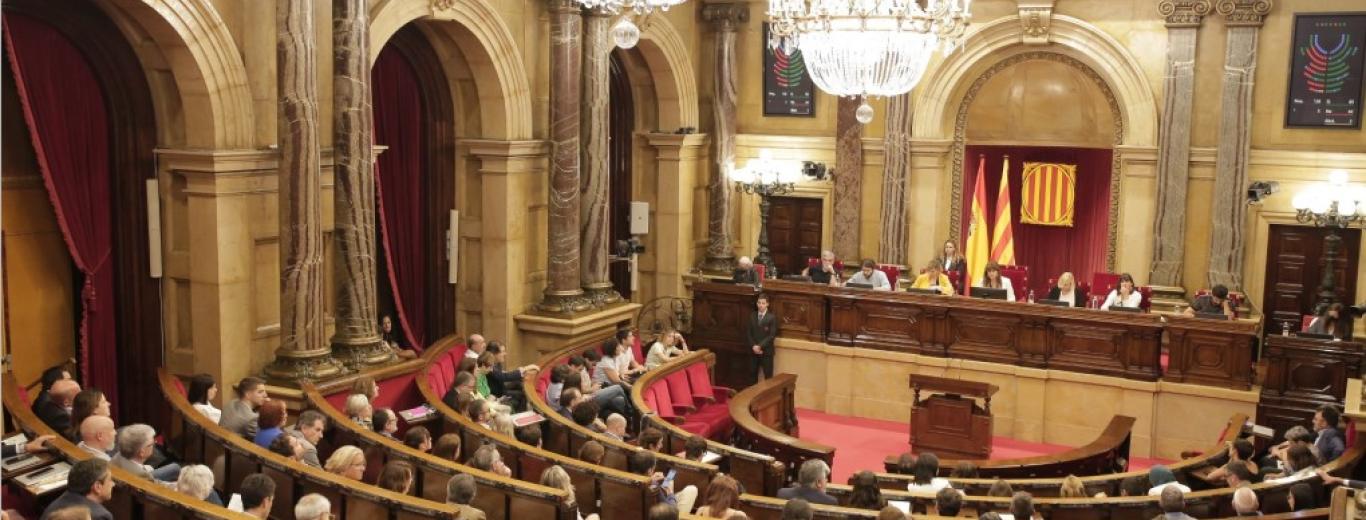Llei 11/2023 de millora urbana, ambiental i social dels barris i viles. Elaboració, aprovació i desenvolupament programàtic

Objectius del projecte
Crear i regular per llei un programa i un fons de recuperació social i mediambiental i de transformació urbana per reduir les desigualtats socials i fer front a la crisi ambiental.
El fons es destinarà a millorar les condicions de vida de la població en els barris i viles que pateixen una alta vulnerabilitat social i riscos d’exclusió, baixa qualitat de l’edificació, dèficits urbanístics, manca d’equipaments i serveis, dificultats d’accessibilitat, riscos ambientals i exposició severa als efectes de l’emergència climàtica.
Descripció del projecte
En la situació persistent de degradació urbanística i social de diversos barris de Catalunya resulta necessària una actuació de regeneració ambiental, social i urbanística en aquells barris i viles més desfavorits, en els quals sigui imprescindible millorar les condicions de vida dels qui hi habiten. I, alhora, generar mecanismes eficaços per governar els efectes de les transformacions realitzades i evitar l’expulsió del veïnat, per a la revalorització urbanística dels habitatges.
Així doncs, la Llei 11/2022, recollint els aprenentatges d’anteriors experiències, habilita la creació un fons de recuperació social, urbana i ambiental de barris i viles de Catalunya, que es destina a actuacions que projectin els ens locals i que persegueixin els següents objectius:
- Millorar les condicions de vida en els barris de major vulnerabilitat urbana, social i ambiental, amb especial atenció a les condicions de vida de les dones i dels col·lectius més vulnerables, així com mitigar i adaptar-se al canvi climàtic.
- Afrontar els dèficits urbanístics, ja sigui en l’espai públic i zones verdes, en la xarxa de transport, en la disponibilitat d’equipaments i serveis bàsics, en la qualitat dels habitatges, en l’accés a l’energia i en la dotació de serveis ambientals.
- Recuperar i promoure l’activitat econòmica dels barris, fomentant l’ocupació comunitària, l’economia social i solidària i el cooperativisme, així com el comerç de proximitat i l’activitat industrial compatible local.
- Facilitar l’autoorganització del veïnat per a la reivindicació dels seus drets i les seves necessitats col·lectives, així com per a la promoció de pràctiques socialment innovadores i per a la seva participació activa en la formulació i gestió de polítiques urbanes.
El fons a crear, dotat amb pressupost anual de la Generalitat, podria incorporar finançament de l’Estat, de la Unió Europea i d’altres fonts. Els beneficiaris podrien ser-ne ajuntaments, consorcis, consells comarcals, mancomunitats, diputacions i altres ens locals que vulguin dur a terme actuacions de millora en viles, àrees urbanes o barris identificats com a àrees d’intervenció prioritària (AIP).
La participació s’articula a partir d’una convocatòria pluriennal adreçada a ens locals. I es crea una comissió per a la gestió del fons formada per l’administració de la Generalitat, l’administració local i la societat civil.
Àmbits d’intervenció
Líders del projecte
Per saber-ne més
Contacte
Parlament de Catalunya
Parc de la Ciutadella s/n
Barcelona (08003)
93 304 65 00







